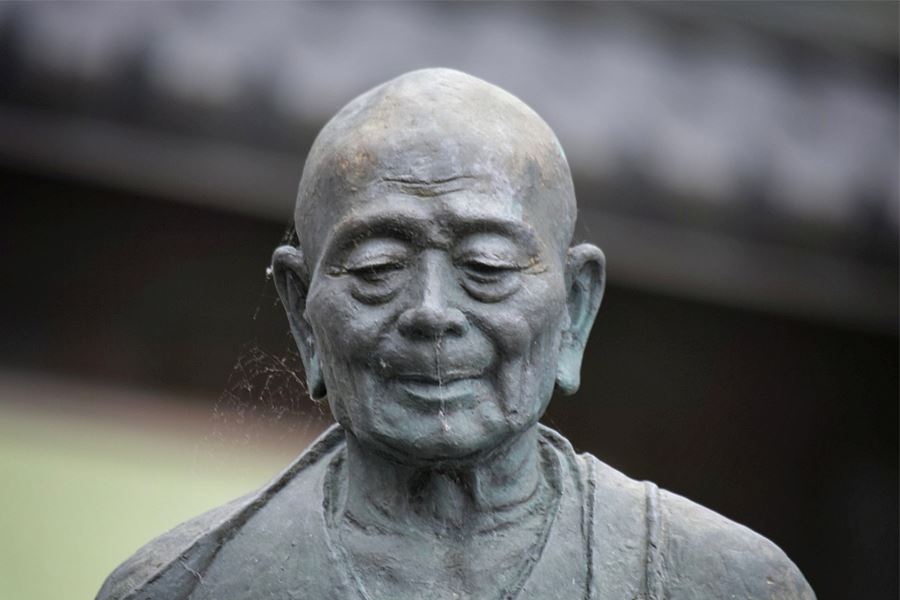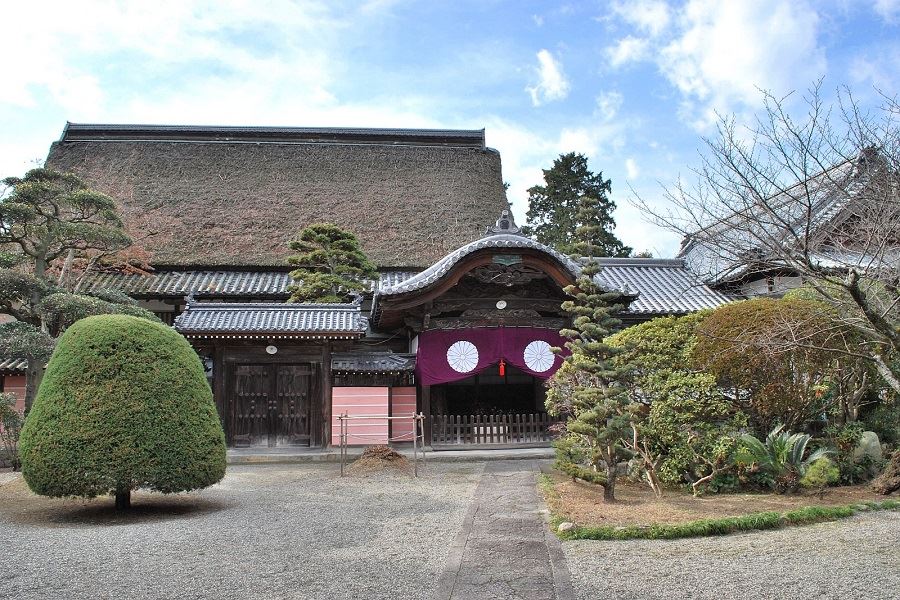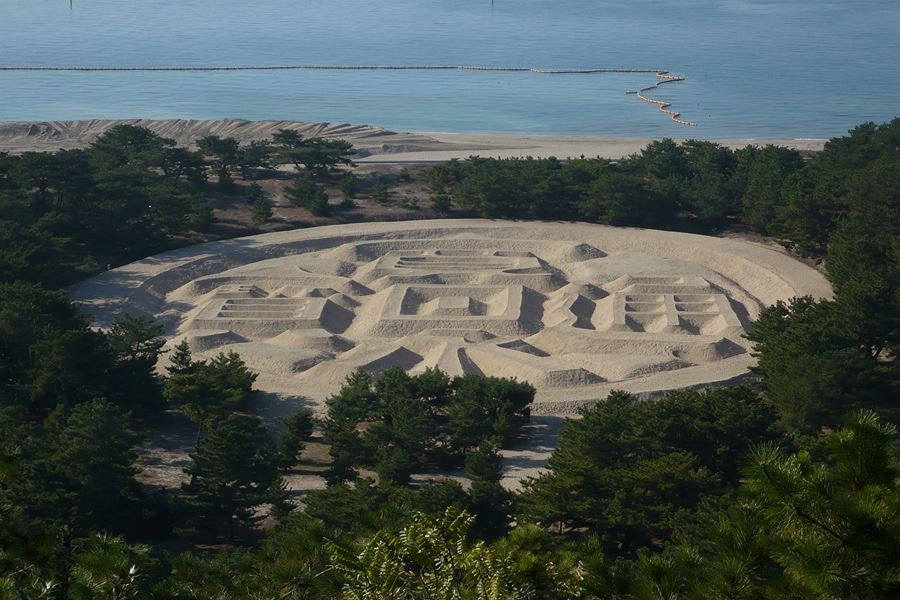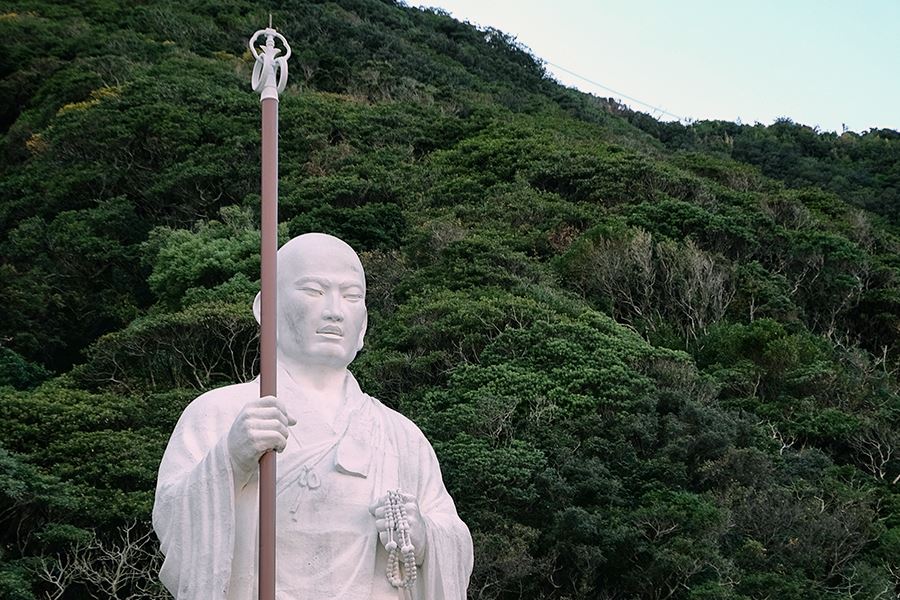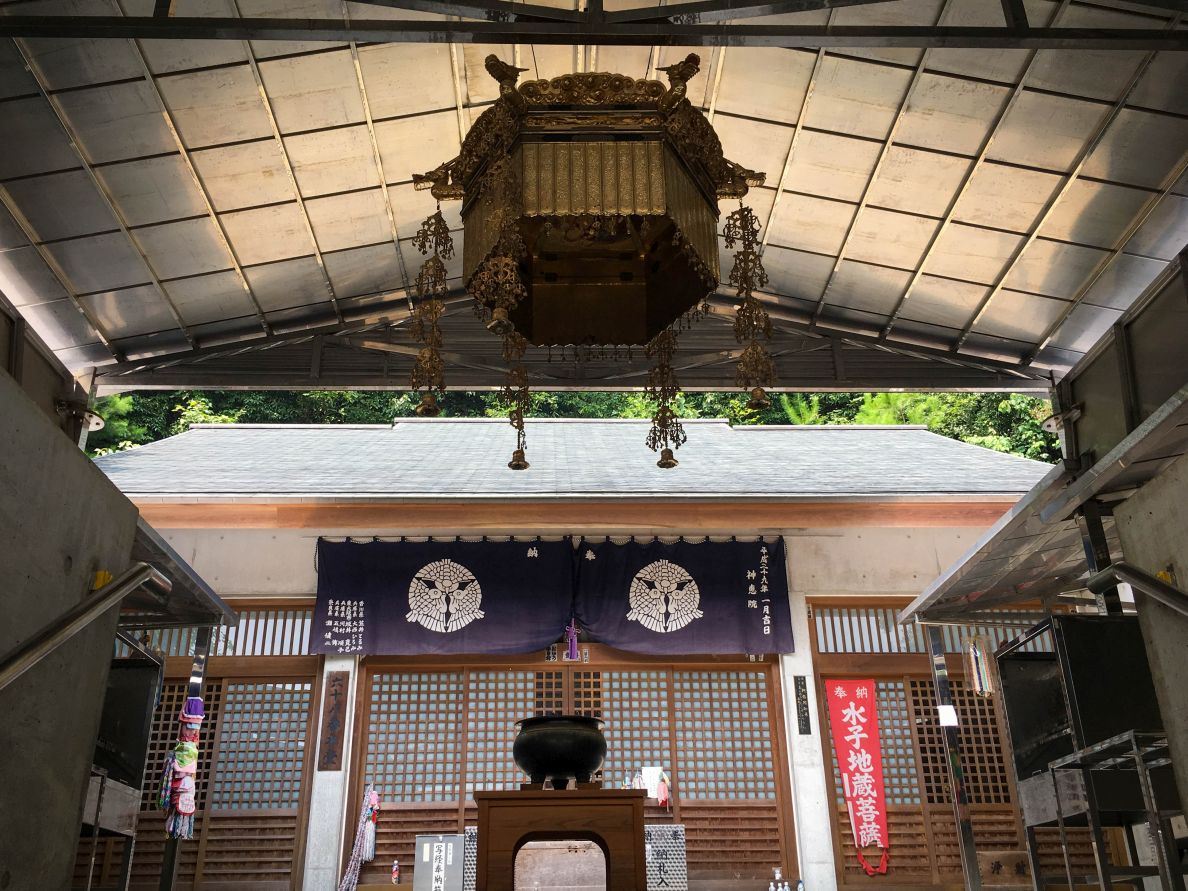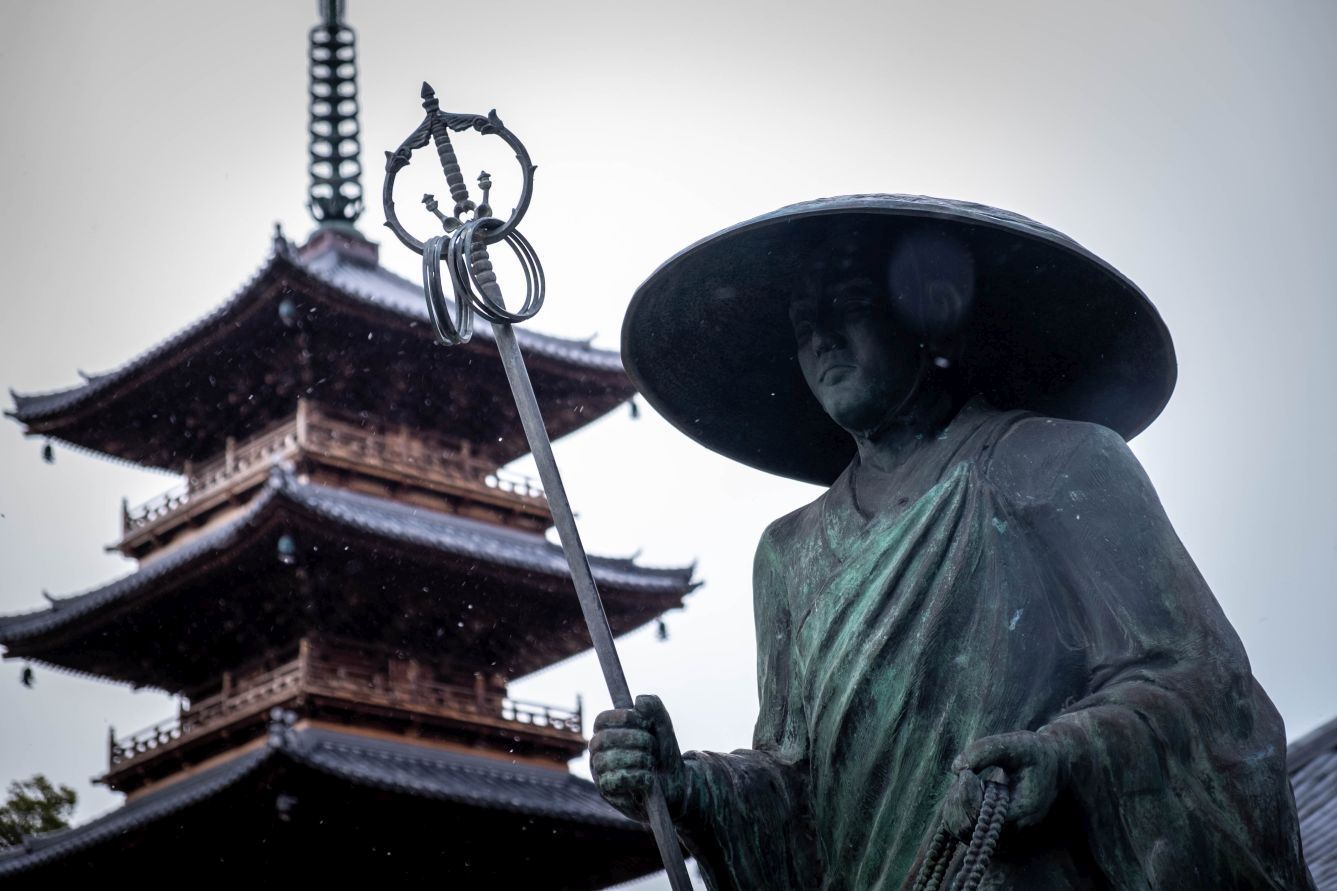Temple 69, Kannon-ji
Home » Temple 69, Kannon-ji
Temple 69, Kannon-ji
Kannon-ji is temple No. 69 on the Shikoku pilgrimage, or Henro. The name of the city where it’s located is Kan’on-ji, but the name of the temple is Kannon-ji. It shouldn’t be confused with temple No. 16, Kan’on-ji, in Tokushima. Kannon-ji shares precincts with temple No. 68, Jin’ne-in, of which it was once a part.
What to see
The Niō Gate is notable for the stone monuments on either side. After passing through the gate and going up the stone steps, the Aizen Hall is in front of you. It houses a statue of Aizen Myōō which was restored in 2017. The Daishi Hall is on the left. The belfry with a fine carving on the ceiling is on the right, and the main hall is on the far right.
If you go up the stone steps to the right of the five Buddhas of wisdom stone statue on the right of Aizen Hall, the Yakushi Hall is in front of you. The Yakushi Hall was formerly the Main Hall of Jin’ne-in. The principal image is a large sitting statue of Yakushi Nyorai, and on the right side is a sitting statue of Dainichi Nyorai in the Womb Realm. The Shingyō Hall is a concrete two-storied pagoda, and its principal image is the sitting statue of Dainichi Nyorai in the Diamon Realm.
Copies of the stone Buddhas from the Saigoku Kannon Pilgrimage are arranged from the upper platform behind the main hall to the left of the Yakushi Hall.
History
The temple was founded in 701, when Nisshō of the Hossō sect established Kotohiki Hachimangū. It was built as a Buddhist temple within a Shintō shrine and was called Jingū-ji Hōkōin.
According to the temple, after Gyōki visited in 722, Kūkai became the 7th chief priest in 807. Imitating Kōfuku-ji Temple in Nara, he established a temple with the full complement of seven buildings each with its own principle image. A pagoda was also built, and in the land-breaking ceremony, seven precious stones such as lapis lazuli, coral, and agate were buried, so the name of temple was changed to Kannon-ji Temple of Treasure Mountain. After that, the name of the sub-temple was changed to Jin’ne-in.
Kannon-ji became the place of imperial prayer for three generations of emperor, from Emperor Kanmu. During the Muromachi period, Ashikaga Takauji’s son was a priest for 45 years at the temple, which prospered greatly. At the time of the Mongol invasions, Emperor Kameyama came here and prayed for the safety of the nation, successfully as it turned out.
The principal image in the main hall is ordinarily withheld from public view. It was shown for the first time in recorded history in 2014.
Legends
According to folklore, when the monk Nisshō was practicing austerity and discipline at Mt. Kotohiki, he saw a boat with an old man playing a koto. Nisshō learned that this old man was Hachiman Daimyōjin. He enshrined the koto and the boat in a shrine and named it Kotohiki Hachimangū.
Information
Name in Japanese: 観音寺
Pronunciation: kannon-ji
Address: 1-2-7 Yahatacho, Kanonji-shi, Kagawa 768-0061
Related Tours

Experience the most beautiful and interesting temples of the Shikoku Pilgrimage in seven days.

A tour for families or friends, staying in the most characterful kominka and ryokan of Shikoku.

Visit the most beautiful and interesting temples of the Shikoku Pilgrimage and walk the toughest trails.

